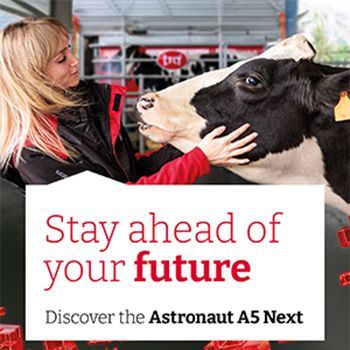Understanding how the U.S. fits into global dairy developments
Thanks Micheal Brouk; Corey Geiger to give me this nice title to present at your Western Dairy Management Conference with over 1000 people joining.

In this post I like to sum up my key insights of my presentation
1. DAIRY DEMAND is the key driver for the existence of the whole dairy industry. Currently the world average person is consuming a glass of milk per day ( 11 oz; all dairy products in milk equivalents ).
2. PEOPLE in developed countries consume almost one litre ( 33 oz) per day which is shown in the picture. In China the per capita dairy demand is 25% of the world average.
3. THE USA IN THE DAIRY WOLRD TODAY: (counting EU as one country)
No. 2: in milk processing
No. 3: in milk production
No. 3: in dairy net export volumes together with Belarus; Argentina&Uruguay
No. 15 in milk self sufficiency in % of production
No.1: in Dairy farm tech
4. THE DAIRY WOLRD IN 2050
In my presentation I have used the IFCN Dairy Research Network outllok work 3/2024. In the scenario of positive consumer preferences to dairy and normal political/economic conditions like in the past the dairy demand growth 2020 - 2050 is predicted to +49% or +454 mill t milk. This represents 4,5 times the milk volume of the USA today.
5. THE USA IN THE DAIRY WOLRD 2050: In my view the USA has the potential to become the world leading dairy exporter in dairy in 2050.
This scenario would require a massive investment fr om dairy farmers in new farms and a significant growth dairy cow numbers.
6. POINTS TO CONSIDER FOR SUCH A US DAIRY SCENARIO
a) REALLY WANTED?: So far it is not fully clear if the US dairy really wants to move into this very bullish growth scenario which would require a good strategy and a e.g. plan like Ireland did it in 2012 for its dairy industry.
b) TOOLS: A lot of policy and dairy industry tools ( e.g. FMMO, risk programs, etc) of the past worked well with a moderate exposure to exports but might not work too well once the USA moves to milk self sufficiency levels like the EU (115% or beyond).
c) TRUST: This scenario requires trust of importing countries in US export supply and also trust from US farmers in having reliable markets for their milk. Here the current policy framework might not be that favourable for trust building.
d) PARTNERSHIP: A lot of dairy importing countries ask dairy exporters to support local milk production in their country. It looks to me that in this field other dairy exporters have more experience than the USA.
Until 2050 there is a good chance for golden times for dairy. I hope this analysis has helped US dairy to define its strategy on "Wh ere to play" and "How to win".
The IFCN Dairy Research Network is updating its 2050 dairy outlook annually. For the latest updates please contact Philipp Goetz.
Source
1. DAIRY DEMAND is the key driver for the existence of the whole dairy industry. Currently the world average person is consuming a glass of milk per day ( 11 oz; all dairy products in milk equivalents ).
2. PEOPLE in developed countries consume almost one litre ( 33 oz) per day which is shown in the picture. In China the per capita dairy demand is 25% of the world average.
3. THE USA IN THE DAIRY WOLRD TODAY: (counting EU as one country)
No. 2: in milk processing
No. 3: in milk production
No. 3: in dairy net export volumes together with Belarus; Argentina&Uruguay
No. 15 in milk self sufficiency in % of production
No.1: in Dairy farm tech
4. THE DAIRY WOLRD IN 2050
In my presentation I have used the IFCN Dairy Research Network outllok work 3/2024. In the scenario of positive consumer preferences to dairy and normal political/economic conditions like in the past the dairy demand growth 2020 - 2050 is predicted to +49% or +454 mill t milk. This represents 4,5 times the milk volume of the USA today.
5. THE USA IN THE DAIRY WOLRD 2050: In my view the USA has the potential to become the world leading dairy exporter in dairy in 2050.
This scenario would require a massive investment fr om dairy farmers in new farms and a significant growth dairy cow numbers.
6. POINTS TO CONSIDER FOR SUCH A US DAIRY SCENARIO
a) REALLY WANTED?: So far it is not fully clear if the US dairy really wants to move into this very bullish growth scenario which would require a good strategy and a e.g. plan like Ireland did it in 2012 for its dairy industry.
b) TOOLS: A lot of policy and dairy industry tools ( e.g. FMMO, risk programs, etc) of the past worked well with a moderate exposure to exports but might not work too well once the USA moves to milk self sufficiency levels like the EU (115% or beyond).
c) TRUST: This scenario requires trust of importing countries in US export supply and also trust from US farmers in having reliable markets for their milk. Here the current policy framework might not be that favourable for trust building.
d) PARTNERSHIP: A lot of dairy importing countries ask dairy exporters to support local milk production in their country. It looks to me that in this field other dairy exporters have more experience than the USA.
Until 2050 there is a good chance for golden times for dairy. I hope this analysis has helped US dairy to define its strategy on "Wh ere to play" and "How to win".
The IFCN Dairy Research Network is updating its 2050 dairy outlook annually. For the latest updates please contact Philipp Goetz.
Source











